| |
| |
EVENT HORIZON
Focus on the Infinite
With Claudius Böhm, Renata Sas; Beate Geissler, Oliver Sann; Nathalie Grenzhäuser; Sebastian Hammwöhner, Uwe Henneken, Dani Jakob, Gabriel Vormstein; Thomas Kratz; Adolf Mathias, Sven Sahle; Euan Macdonald; Kim Nekarda and Christopher Winter |
7.12.2002 - 19.1.2003
|
|
| |
concept_ program_
The exhibition event horizon at lothringer13/halle presents current perspectives dealing with landscape as a medium for formal experiments and social statements. The long tradition of landscape representation in art as well as its construction and use in different types of mass media provoked a genereation of young artists to a differentiated analysis. These young artists do not choose mere documentation as their mode of expression, but engage in the staging of fictional events.
The landscape motif is understood as an experimental ground, on which medial and formal changes, as well as innovative concepts of art can be tested under ideal conditions. The artists participating in this exhibition create event horizons with found objects from digital imagery, and work with photography, painting, and installations, with video- and computer technique. Their transformation of artistic categories is tied to a new discourse on our technological and political environment. The artists react to the destruction of space through increased mobility and telecommunication, to the abstraction of acts of war, as well as to the landscape as an image of resistance against the civilizing status quo, which at the same time is used as a means of econimical interest and the formation of political idenity.
 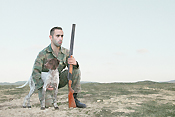 
oben: Böhm
unten, von links: Böhm, Geissler/Sann, Winter
Opening:
|
Friday, 06.12.2002, 7p.m. |
| Duration: |
07.12.01 bis 19.01. 2003 |
| |
daily except monday, 1p.m.-7p.m. |
| Curators: |
Margit Rosen and Christian Schoen |
| |
program |
| |
|
|
|
| |
7.12., 14 - 18h
7. - 8.12.,
13 - 19h
13.12., 20h
17.1., 19h
|
PERCEPTION GEOGRAPHIES Wahrnehmung, Körper, Emotion in Wissenschaft und Kunst
Referenten: Dr. Miklós Kiss (Linguist und Humanbiologe, Generation Research Program des Humanwissenschaftlichen Zentrums, LMU München) Dr. Martin Korte (Neurobiologe, Max-Planck-Institut für Neurobiologie, München) Bettina Henkel (Künstlerin, Akademie der bildenden Künste Wien) Dr. Carolin Länger (Soziologin, Regisseurin und Theaterpädagogin, Universität Bielefeld) Konzept und Moderation: Nina Stuhldreher (Künstlerin, München/Wien)
Im Rahmen der Reihe "Digital Happy Hour" Veranstalter: Medienforum München e.V.
Im Rahmen von Perception Geographies präsentiert die Künstlerin Bettina Henkel ihre erstmals auf der Ars Electronica 2002 gezeigte Installation "Community Interpreting" (lothringer13/werkstattstudio)
ICONIC reTURN - Vorträge aus den Bildwissenschaften
Themenfelder: Bildwirtschaft + Piktogramm und Hieroglyphe + Imagination und Realisation
Referenten: Dr. Matthias Bruhn, Daniela Stöppel und Anselm Lenhardt
Ergänzende Vorträge im Rahmen der Workshops zu ICONIC TURN
Vortrag
Raumflucht
Dr. Martin Burckhardt
(Kulturtheoretiker, Berlin) |
|
|
| |
the chrono-files
from time based art to database
With Jörg Auzinger, Michael Aschauer, Maia Gusberti, Sepp Deinhofer und Nik Thoenen, Peter Cornwell, Anja Krautgasser, infossil, Niki Passath, Axel Heide und Onesandzeros, Philip Pocock and Gregor Stehle
concept_ program_ |
8.2. - 9.3.2003 |
|
| |
Die digitalen Technologien haben die Bedingungen des Kommunizierens, Aufzeichnens und Speicherns von Informationen verändert. Individuelle und kollektive Gedächtnisdaten bilden eine neue materielle Kultur, in der nicht die Aura des Originals über seinen Wert entscheidet, sondern seine weltweite Verfügbarkeit. In ihrer Dauer ist diese Kultur geprägt von der Fragilität der Trägermedien, ihrer Abhängigkeit von Energie, der kontinuierlichen Übertragung der Daten auf neue Träger und der Anpassung an aktuelle technische Standards. Die Projekte, die im Rahmen der Ausstellung "the chrono-files" in der lothringer13/halle vorgestellt werden, widmen sich den Fragen der Zeitlichkeit von gespeicherten Daten und ihren materiellen Bedingungen sowie den Möglichkeiten des digitalen Archivs, das alle Formate umfasst: Texte, Sprache, Bilder, Filme, Musik und Nutzungsdaten werden einheitlich digital gespeichert. Während Filme oder Video chemisch bzw. magnetisch fixierte Informationen enthalten, die über eine festgelegte Technik ausgelesen werden, entscheiden in den computerbasierten Künsten die vom Künstler geschriebenen Programme darüber, welche Bilder und Klänge sich aus diesen Daten in Echtzeit zusammensetzen. Ereignisse der Gegenwart, vor Ort oder im Netz, beeinflussen als Variablen der Algorithmen die Form des Kunstwerkes.
Jörg Auzinger (A) reflektiert mit "switch enlightenment" die Konfrontation traditioneller Speichermedien wie des Buches mit elektronischen Kommunikations-formen. Michael Aschauer, Maia Gusberti, Sepp Deinhofer und Nik Thoenen (A) entwickelten mit "./logicaland" ein politisch-soziales Onlinespiel, das die Bedingungen des Zugangs zum Netz und damit zum globalen digitalen Archiv thematisiert. Peter Cornwell (GB) entwirft mit "MetaPlex" die Vision eines "Musée Imaginaire" (Malraux) der Gegenwart und ermöglicht einen räumlichen Zugang zu Videofilmen aus unterschiedlichen Archiven (ICA, ZKM, lothringer13/spiegel). Anja Krautgasser (A) zeigt mit <IP-III> die synästhetische Transformation von Daten der Netznutzung in räumliche Architektur und Klang (Musik: Dieter Kovacic). infossil (D) beschreibt das Prinzip von Energie und Information. Der Roboter "Kurt" von Niki Passath (A) generiert Bilder aus dem Internet und tätowiert sie in menschliche Haut. Axel Heide, Onesandzeros, Philip Pocock und Gregor Stehle (D/F) übergeben im Rahmen von "unmovie" eine Datenbank anonymer Filme an programmierte Agenten, die durch ihre Gespräche über die Auswahl der Filme entscheiden, die gestreamt werden. Über ein WirelessLan-System können Besucher im gesamten Bereich der lothringer13 via Laptops das Gespräch der Agenten und damit den Videostream beeinflussen oder einfach betrachten. Die Zusammenarbeit mit "unmovie.org" ist der Auftakt des dauerhaften künstlerischen Infrastruktur-projekts artchalking.
Die Ausstellung entstand in Kooperation mit der Universität für Angewandte Kunst Wien und artchalking, [m] Medienforum München e.V., dem Presse- und Informationsamt der Landeshauptstadt München (www.muenchen.de) sowie mit Unterstützung von M''net - Telekommunikation für München und Bayern sowie Street Vision Ltd., London. Zur Ausstellung erscheint ein Katalog.
Eröffnung:
|
Freitag, 07.02.2003, 19 Uhr |
| Ausstellungsdauer: |
08.02. bis 09.03. 2003 |
| |
täglich außer montags 13 - 19 Uhr |
| Kuratoren: |
Margit Rosen und Dr. Christian Schoen |
| |
|
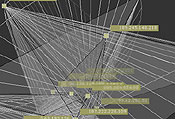  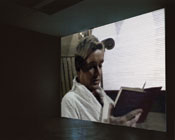 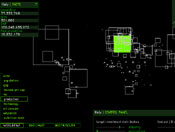
top: Passath
above, from left: Krautgasser, Cornwell, Auzinger, "logicaland"
program
8.3., 21h
stereotypen [Henze /Lorenschat] >bricolage<
Audiovisuelle Klangperformance |
|
 home about news archive cv publications
home about news archive cv publications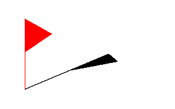
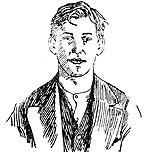




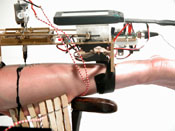




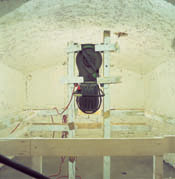
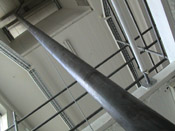 Bergmann
Bergmann
 Heinert
Heinert 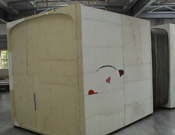 Sailstorfer
Sailstorfer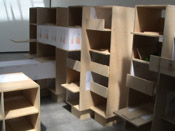 Stehle
Stehle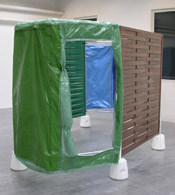 Wischnewski
Wischnewski 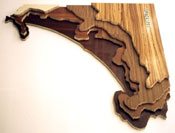
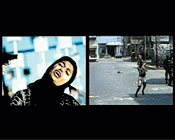 Burnett
Burnett